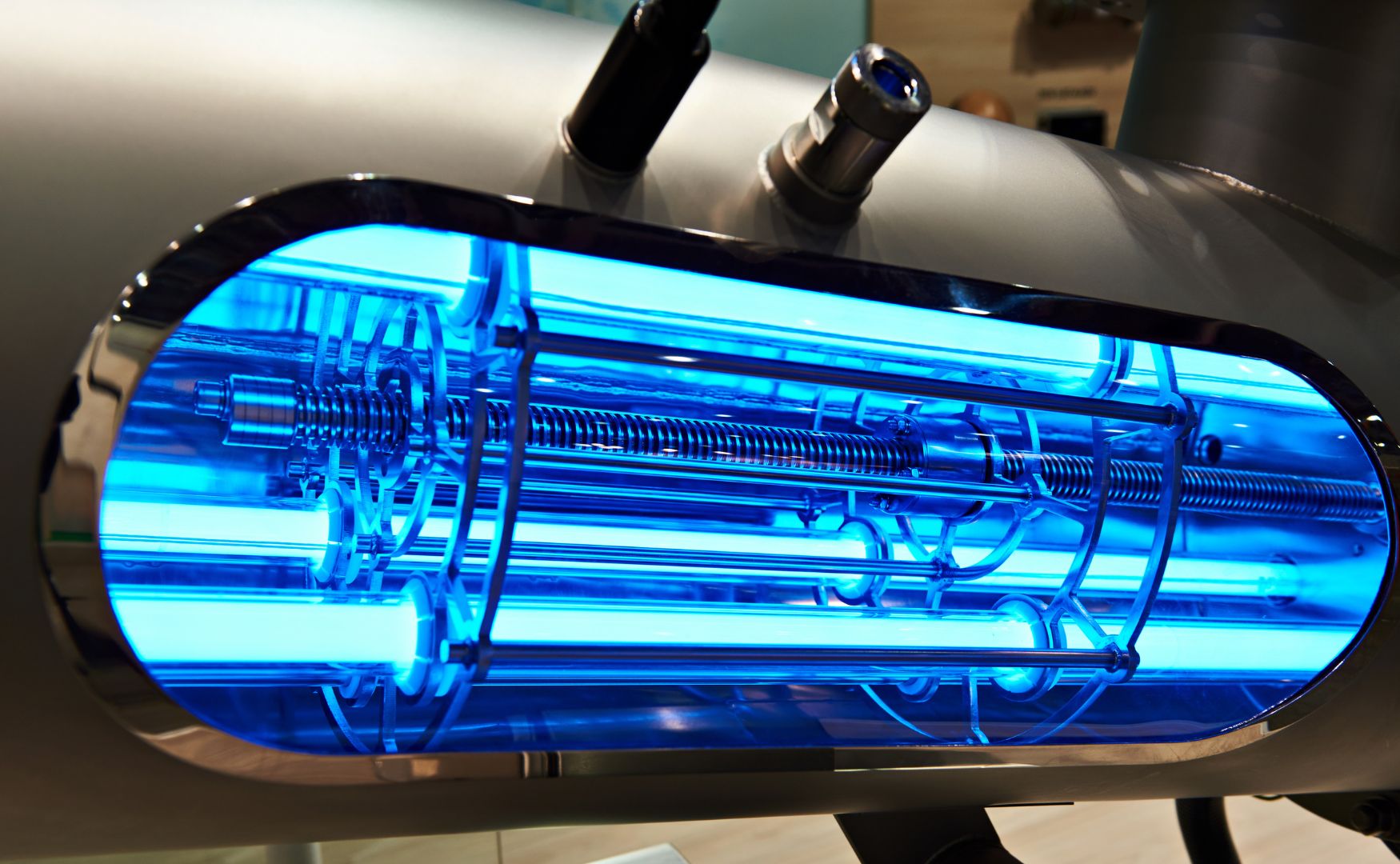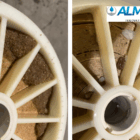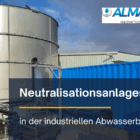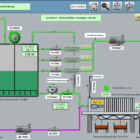The term "permeate" refers to the purified water that passes through a membrane while impurities are retained. Permeate plays a crucial role in industrial water treatment, particularly in membrane processes such as reverse osmosis (RO), nanofiltration (NF) and ultrafiltration (UF). This article provides a comprehensive look at the properties, production and applications of permeate, as well as the challenges associated with its production.
Table of contents
Basics of the permeate
Permeate is the result of a membrane separation process in which water is passed through a semi-permeable membrane under pressure. As the water passes through the membrane, dissolved salts, particles, microorganisms and other impurities remain in the so-called retentate.
Important properties of permeate:
Leitfähigkeit: Ein Indikator für die Reinheit; typischerweise < 10 µS/cm für technische Anwendungen und < 0,1 µS/cm für Reinstwasser.
Gesamtgehalt gelöster Feststoffe (TDS): In der Regel < 10 mg/l.
TOC (Total Organic Carbon): Minimum content of organic compounds, depending on application below 0.1 mg/l.
Particle-free: Free of suspended particles and colloids.
Microbiological purity: Absence of bacteria, viruses and other microorganisms.
Production of permeate
Permeate is produced in several steps, which vary depending on the quality of the raw water and the intended use. The most common processes include
1. pre-treatment of the raw water
Pre-treatment is crucial to protect the membranes from fouling and scaling and to ensure consistent permeate quality. Typical steps include:
Filtration: Removal of suspended solids and particles.
Dosing of antiscalants: Prevents scaling due to poorly soluble salts such as calcium carbonate or barium sulphate.
Activated carbon filtration: Reduces organic compounds and chlorine that could damage membranes.

Photo: Our filtration system with downstream ion exchange
2. membrane process
Different membrane technologies are used depending on the requirements:
Reverse osmosis (RO): Removes up to 99 % of dissolved salts and organic substances. RO is the preferred method for producing high-purity permeate.
Nanofiltration (NF): Reduces divalent ions such as calcium and magnesium in a targeted manner and is often used in water softening.
Ultrafiltration (UF): Removes suspended solids, microorganisms and colloids, but not dissolved salts.

Photo: Our reverse osmosis system for treating wastewater, river water and process water
3. polishing
After membrane filtration, the permeate can be subjected to further treatment steps to meet specific requirements:
Electrodeionization (EDI): Removes the last traces of ions and increases purity.
UV disinfection: Removes microbiological contamination.
Activated carbon or ion exchangers: Remove organic residues and other ions.

Photo: Our UV system for disinfection and TOC reduction
Applications of permeate
Permeate is used in a variety of industries and processes where high water quality is required:
1. food and beverage industry
Production of beverages such as soft drinks and beer, where consistent water quality is crucial.
Cleaning processes that require residue-free water.
2. pharmaceutical industry
Production of medicines and vaccines in which water of the highest purity is used as a raw material and cleaning agent.
Preparation of water for injection (WFI).
3. electronics and semiconductor industry
Cleaning of wafers and printed circuit boards, where even the smallest impurities can lead to production errors.
Production of ultrapure water for chemical processes.
4. energy generation
Used as boiler feed water in power plants to prevent deposits and corrosion.
Use in closed cooling systems to prevent chemical reactions and scaling.
5. wastewater treatment
Reuse of treated wastewater in industrial processes.
Reduction of fresh water consumption through recirculation.
Challenges in the production of permeate
Despite advances in membrane technology, there are challenges that need to be overcome in the production of permeate:
1. fouling and scaling
Deposits on membranes can reduce the flow and increase operating costs.
Regular dry cleaning and effective pre-treatment are necessary.
2. energy consumption
In reverse osmosis in particular, the energy required for high-pressure pumps is a significant cost factor.
Efficient pressure exchangers and process optimization can reduce energy consumption.
3. service life of the membranes
Membranes are susceptible to mechanical and chemical damage.
Regular monitoring and maintenance extend the service life.
Future prospects
Permeate production technology is constantly evolving to increase efficiency and minimize resource consumption. The most important trends include:
New membrane materials: Improved fouling resistance and higher flow rates.
Digitalization: use of sensors and artificial intelligence to optimize process control.
Hybrid process: Combination of membrane processes with other technologies such as electrodialysis or membrane distillation.
Conclusion
Permeate is an indispensable component of modern industrial processes where high water purity is required. Its production requires a combination of advanced technologies and effective process monitoring. Continuous innovation makes it possible to increase efficiency and meet the requirements of various industries.
For further information on our products, please feel free to contact us at any time!








